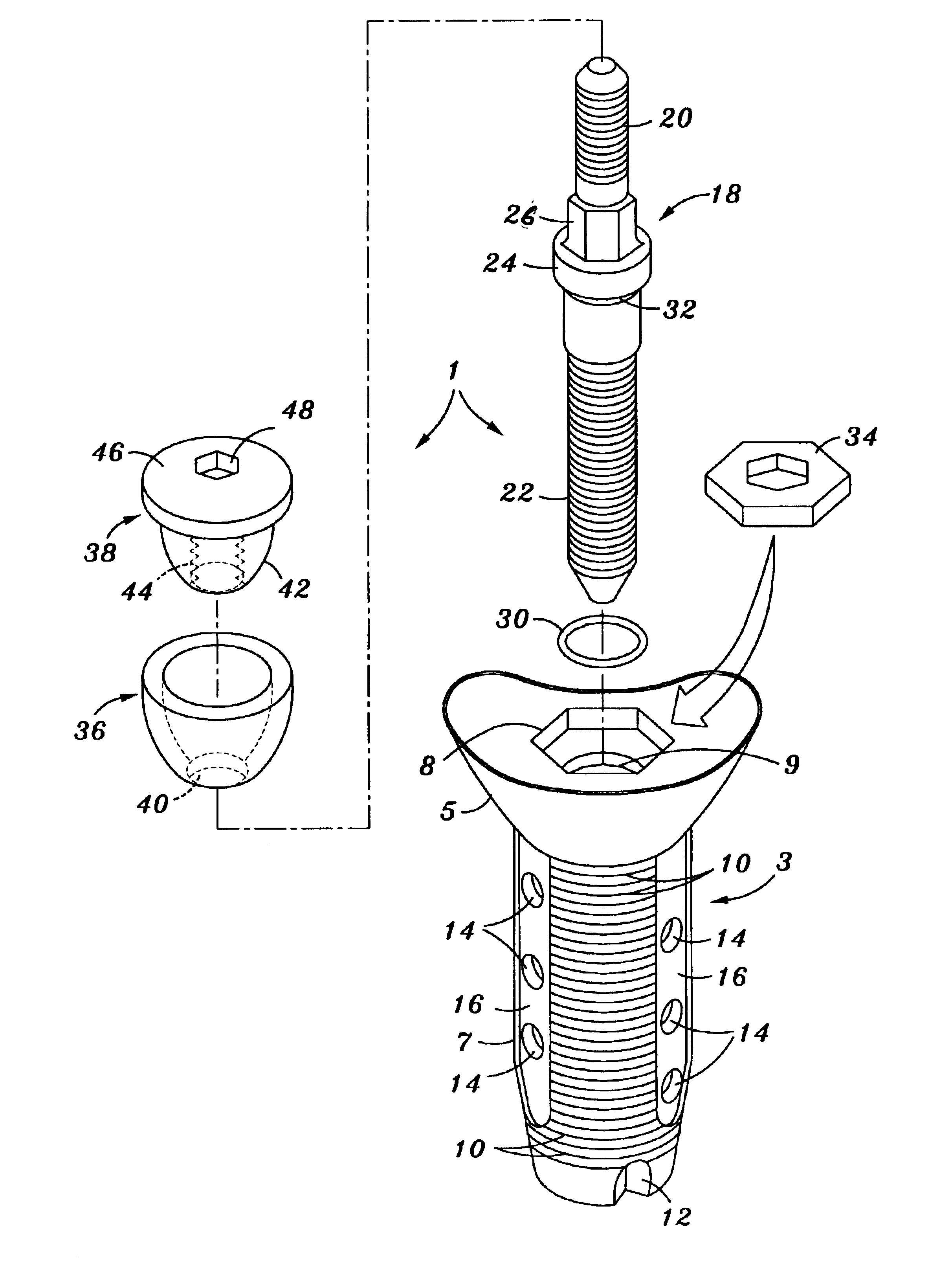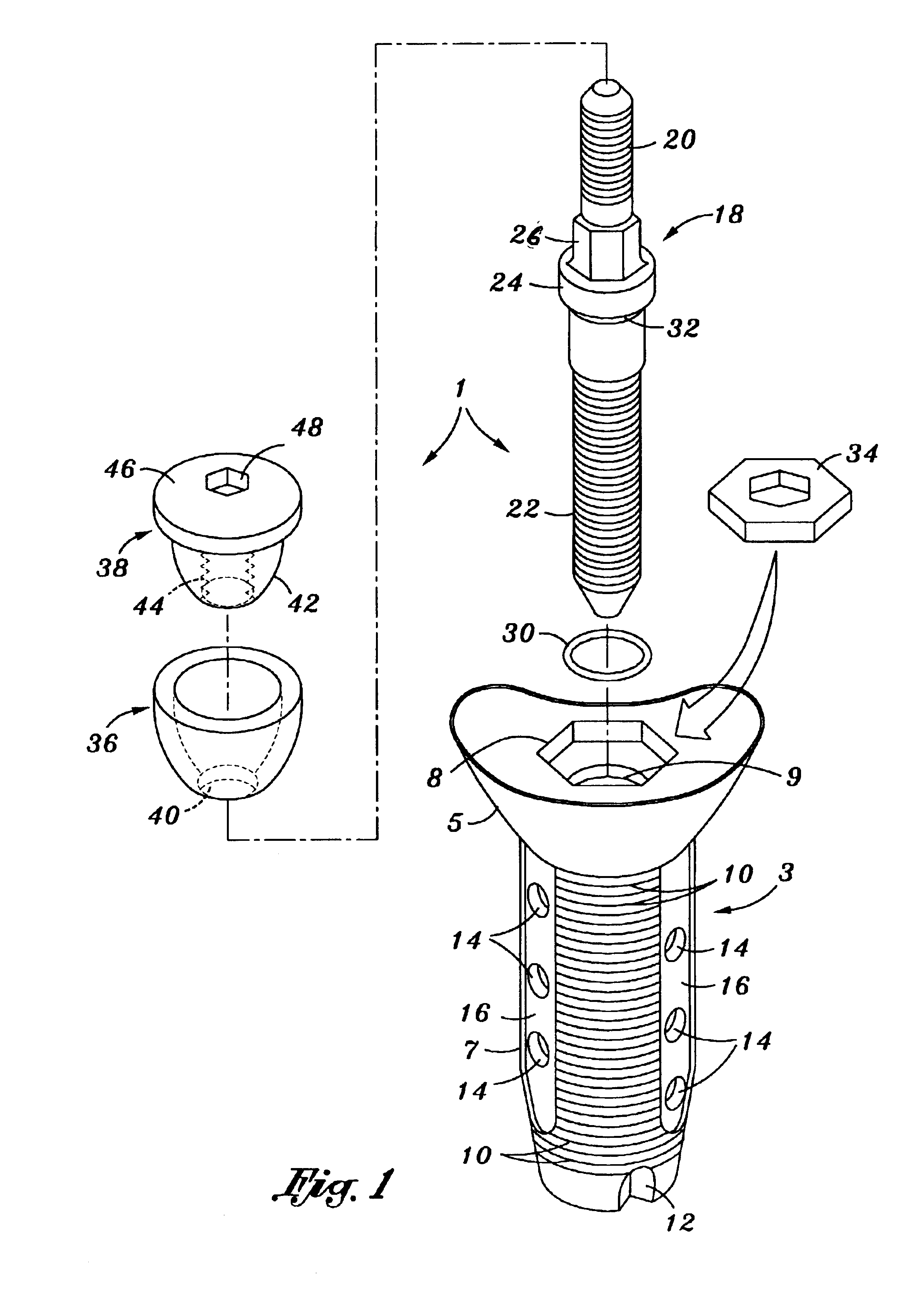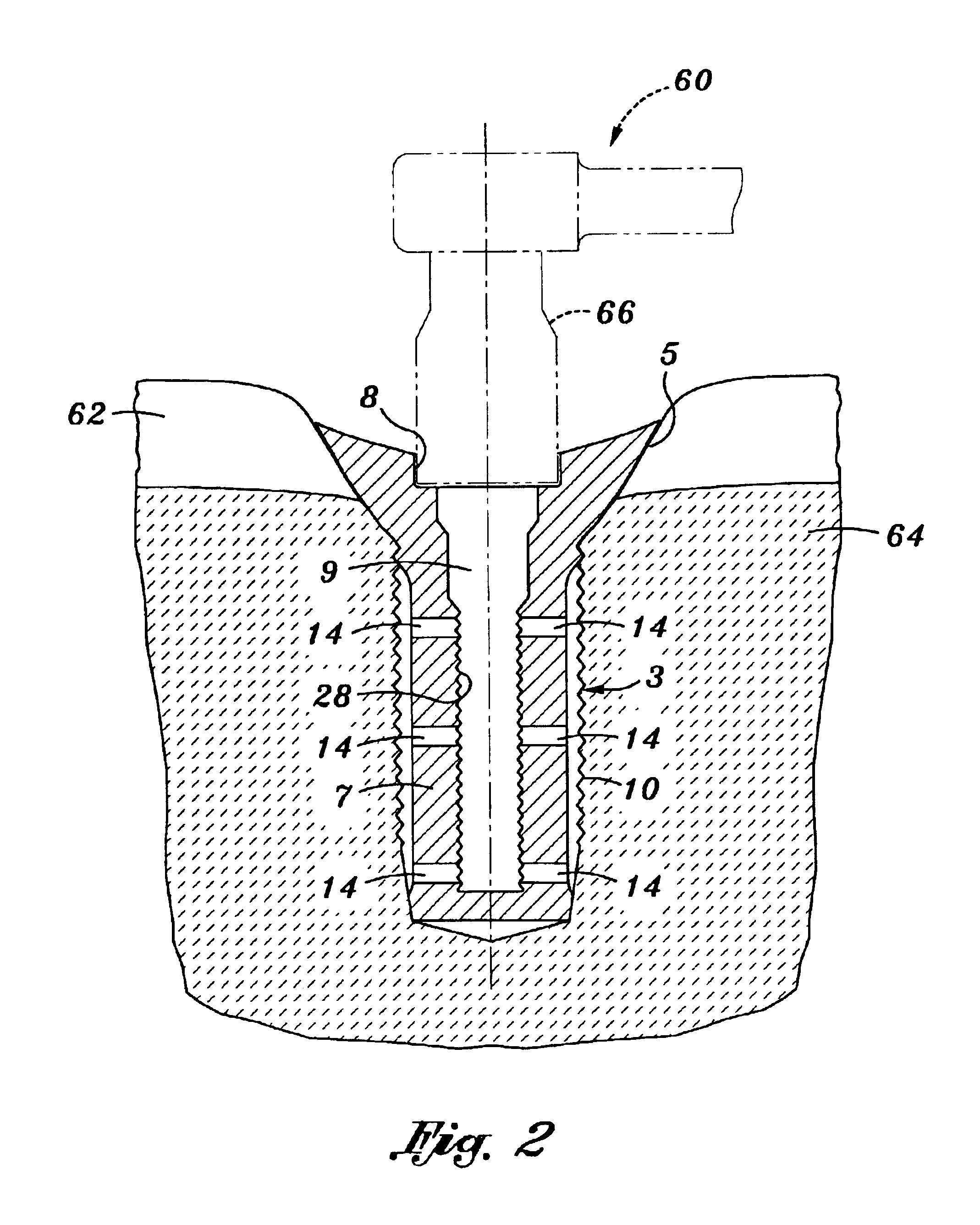Growth factor releasing biofunctional dental implant
a biofunctional, growth factor-releasing technology, applied in dental implants, dental surgery, medical science, etc., can solve the problems of crown breakage, screw loosening and screw breakage, and conventional implants are often too rigid to function like natural teeth
- Summary
- Abstract
- Description
- Claims
- Application Information
AI Technical Summary
Problems solved by technology
Method used
Image
Examples
first embodiment
[0019]Referring to FIG. 1 of the drawings, there is shown an exploded view of an implant bone locking mechanism 1 which forms this invention. The implant bone locking mechanism 1 includes a root portion 3 that is preferably manufactured from a biocompatible metallic (e.g. titanium or titanium alloy) or ceramic material that is adapted to be implanted in a socket formed in the bone structure of a dental patient in a manner that will be described in greater detail when referring to FIG. 2. The root portion 3 includes a relatively wide, outwardly flared implant cradle 5 and a relatively narrow, generally cylindrical implant casing 7 which depends downwardly therefrom. As is best shown in FIG. 2, the implant casing 7 of root portion 3 is implanted (by means of a suitable tool 60) within an implant socket that is made in the patient's bone structure so that the implant cradle 5 can support a crown portion (designated 50 in FIG. 5) above the gum line.
[0020]As shown in FIG. 1, the outwardl...
second embodiment
[0036]An exploded view of an implant bone locking mechanism 100 which forms this invention is now disclosed while referring initially to FIG. 6 of the drawings. Like the locking mechanism 1 of FIGS. 1-5, the implant bone locking mechanism 100 of FIG. 6 includes a metallic (e.g. titanium or titanium alloy) or ceramic root portion 103 that is adapted to be implanted in a socket formed in the bone structure of a dental patient. The root portion 103 includes a relatively wide, outwardly flared implant cradle 105 and a relatively narrow, generally tubular and slightly tapered implant casing 107 depending downwardly therefrom. With the root portion 103 positioned within the implant socket, the implant cradle 105 will be supported above the patient's gum line to receive a crown portion (designated 170 in FIG. 8).
[0037]The top of implant cradle 5 may be covered with a low friction (e.g. Teflon) coating to minimize friction at the interface of the crown portion 170 with the implant cradle. W...
PUM
 Login to View More
Login to View More Abstract
Description
Claims
Application Information
 Login to View More
Login to View More - R&D
- Intellectual Property
- Life Sciences
- Materials
- Tech Scout
- Unparalleled Data Quality
- Higher Quality Content
- 60% Fewer Hallucinations
Browse by: Latest US Patents, China's latest patents, Technical Efficacy Thesaurus, Application Domain, Technology Topic, Popular Technical Reports.
© 2025 PatSnap. All rights reserved.Legal|Privacy policy|Modern Slavery Act Transparency Statement|Sitemap|About US| Contact US: help@patsnap.com



